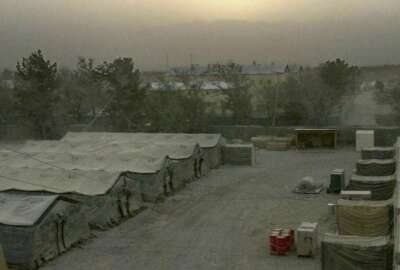Air Force to focus on set of issues to counter new world challenges
Air Force Secretary Frank Kendall said Thursday that the service just added its seventh imperative this week: Defining the B-21 long range strike family of systems.
The Air Force is working with a set of dynamic issues that it feels are most important to its operational resiliency for the future, and will help the service in near-peer competition.
Dubbed “operational imperatives,” the Air Force is leaning hard on the specific areas to counter rivals like China and Russia.
Air Force Secretary Frank Kendall said Thursday that the service just added its seventh imperative this week: Defining the B-21 long range strike family of systems.
“I felt we needed to do more analysis of and develop a deeper understanding to drive what we acquire and drive how we modernize,” Kendall said during the Defense One 2022 Outlook. “China and Russia pose a very dense compressed environment with many, many problems, difficult operational problems involving modern forces. It’s the sort of thing we haven’t actually done for a very long time.”
Kendall noted that the countries were focusing on higher power conflict while the United States was honed in on counter-insurgency warfare.
The operational imperatives are rooted in future warfare, next generation issues and problems of a changing physical world.
They include defining resilient space order of battle and architectures. That is partly setting up the Space Force and integrating it into the Department of the Air Force.
“We’re getting the Air Force and Space Force and the Secretariat aligned. There I have a series of management initiatives that are more about how we do business… about efficiencies and about improving our ability to function as an institution,” Kendall said. “Space is now a contested environment. We’re going to bring the Space Development Agency into the Air Force pretty soon. They’ve definitely taken some steps in, but very much the right direction, distributed architectures that are more resilient, as well as capitalizing on commercial applications. We’ve done some of the same sorts of things that are planning in the Space Force.”
Kendall is also thinking about Homeland Security as well, he wants to ensure air bases are resilient.
“We depend on air bases to support all of our tactical aircraft, basically, our fighters,” he said. “The Chinese and Russians have been building mechanisms to attack those bases. We’ve got to figure out what mix of hardening dispersion, something we call agile combat employment, and other measures we could take are going to be enough to give us the capability that we need there.”
The Air Force is continuing to stay highly invested in the Advanced Battle Management System and Joint All Domain Command and Control — two interconnected systems that give better situational and data awareness to the battlefield.
Other issues on the list include next generation air dominance and achieving moving target engagement at scale.
The Air Force isn’t the first to do something like this in the face of near-peer competition. The Army put out its modernization strategy a few years ago and focused on six areas it wanted to achieve an end-state with by 2035.
Those are now known as the Big Six plus two, as the two others have been added later on. Those include things like precision fires, next generation combat vehicles and soldier lethality.
Copyright © 2025 Federal News Network. All rights reserved. This website is not intended for users located within the European Economic Area.
Scott Maucione is a defense reporter for Federal News Network and reports on human capital, workforce and the Defense Department at-large.
Follow @smaucioneWFED






